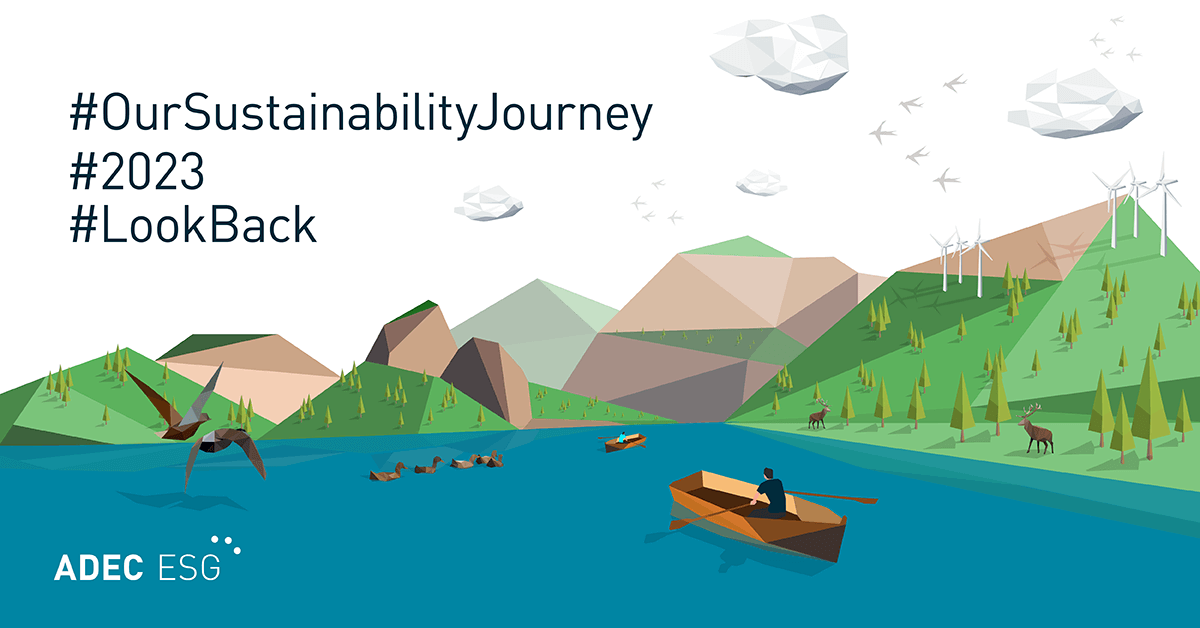 The following article is part of the ongoing Sustainability Matters series on the FirstCarbon Solutions (FCS) blog, which focuses on those who share a commitment to sustainability, the environment and our planet. The series concentrates on those companies and organizations that conduct routine, everyday business in an exceptional, sustainable manner, as well as those offering unique products and services in a sustainable fashion. FCS hopes that the Sustainability Matters series can open eyes to those striving to make a difference. Click here to find previous articles from the Sustainability Matters series.
The following article is part of the ongoing Sustainability Matters series on the FirstCarbon Solutions (FCS) blog, which focuses on those who share a commitment to sustainability, the environment and our planet. The series concentrates on those companies and organizations that conduct routine, everyday business in an exceptional, sustainable manner, as well as those offering unique products and services in a sustainable fashion. FCS hopes that the Sustainability Matters series can open eyes to those striving to make a difference. Click here to find previous articles from the Sustainability Matters series.
As a company whose brand is synonymous with the outdoors and rooted in the natural environment, Timberland, maker of shoes, boots, and apparel, has wholly and sincerely embraced the role of a corporate environmental steward. Through reducing their energy demand, developing renewable energy sources, and working with their suppliers to do the same, Timberland has not only accepted their role as the environmental benchmark within their industry, but also intends to change standard industry practices for the good of the environment.
Between 2006 and 2012, Timberland achieved a 46 percent worldwide reduction in absolute carbon emissions by improving efficiencies in facilities they own and operate, as well as reducing employee air travel. But despite these reductions, Timberland has committed to reducing their impacts even further by 2015, establishing a goal to reduce their absolute emissions by 50 percent from the 2006 baseline. To achieve this ambitious goal, Timberland has implemented several initiatives to drive improvements in performance and efficiency:
- Incorporate upgrades such as retrofitting existing overseas facilities and construct new ones with energy-efficient lighting, and follow green building standards like the Leadership in Energy and Environmental Design (LEED). Such measures have helped cut energy use at many facilities by 30 percent or greater.
- Develop onsite energy production mechanisms and tap into local renewable energy sources, which powered 15 percent of Timberland’s energy use in 2011. They aim to increase their renewable energy purchases to 30 percent by 2015.
- Decrease employee travel by encouraging and incentivizing employees to seek practical alternatives to air travel, along with developing new technology to reduce overall plane travel.
While Timberland is addressing their own emission reductions, in order to holistically tackle climate change, they are also focusing on the most significant source of their emissions – their value chain. Critical to the overall success of their emission reduction efforts is both reducing impact through design and cutting emissions throughout their value chain.
Reducing Emissions With the Green Index® Rating System
A large percentage of Timberland’s overall climate impact can be attributed to raw materials production, which accounts for over 70 percent of their emissions. Thus, the majority of Timberland’s overall carbon footprint is connected to their materials value chain.
By empowering designers to choose less environmentally harmful materials for their products, Timberland can effectively reduce their emissions. They have created the Green Index rating system, which provides both the company and consumers with the estimated climate impacts associated with their products. The Green Index rating system is based on scores from emissions produced from raw material extraction, combined with ratings for the chemical components of their products, and for the renewable, recycled, or organic materials used during manufacturing. For the sake of transparency, Timberland places the Green Index score on their shoe boxes, which informs consumers about the positive and negative impacts associated with, say, their new pair of boots.
Evaluating Supply Chains Constantly
In addition to reducing emissions associated with their products, Timberland’s strategy for reducing their entire carbon footprint includes constantly evaluating, adjusting, and improving their supply chain and engaging their peers. Timberland aims to standardize the metrics they use in evaluating their supply chain and improve factory performance. By doing so, Timberland targets to reduce greenhouse gas emissions throughout their supply chain as well. By facilitating cooperation between its multiple, sometimes competing suppliers, Timberland intends to continuously modernize sustainability. To make this a reality, Timberland partners with several industry organizations, including the Global Social Compliance Programme, Leather Working Group, Outdoor Industry Association, and Sustainable Apparel Coalition, to ensure that they propogate the best sustainability practices across their value chain.
When it comes to a more sustainable future, Timberland is putting its best “boot” forward for the betterment of our environment. If your company or organization strives to reduce its carbon footprint while improving efficiency, productivity, and boosting its bottom line, let FCS show you how simple and beneficial it is to move towards a more sustainable future. For more information, simply click below:





